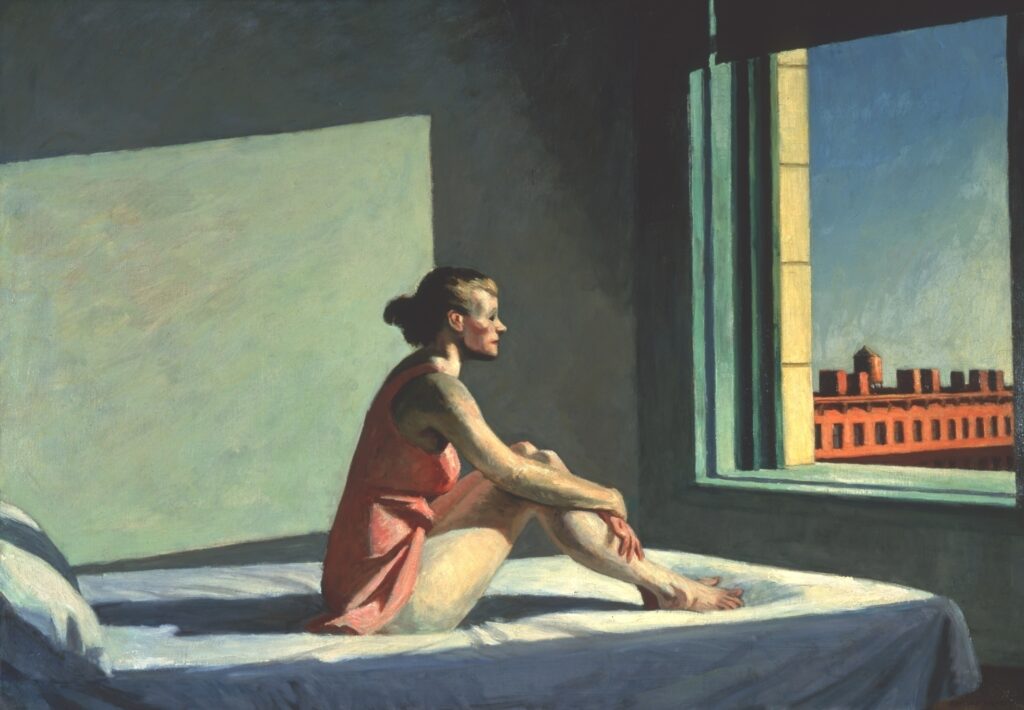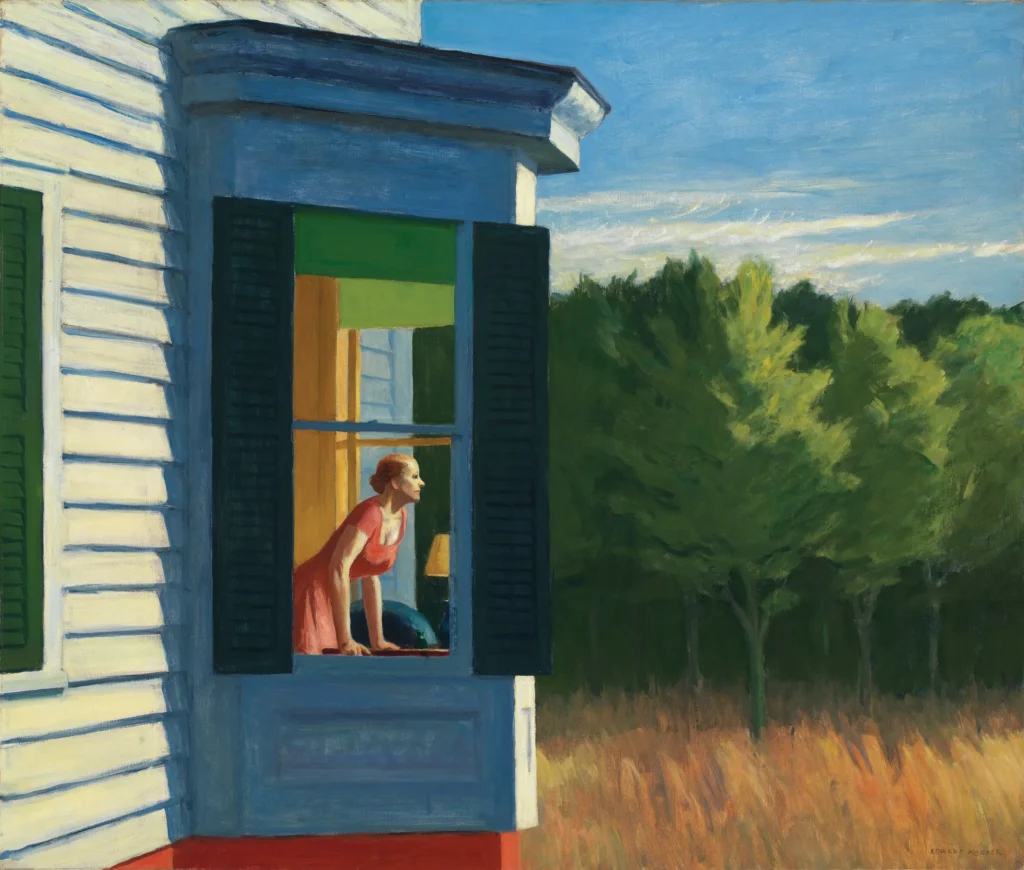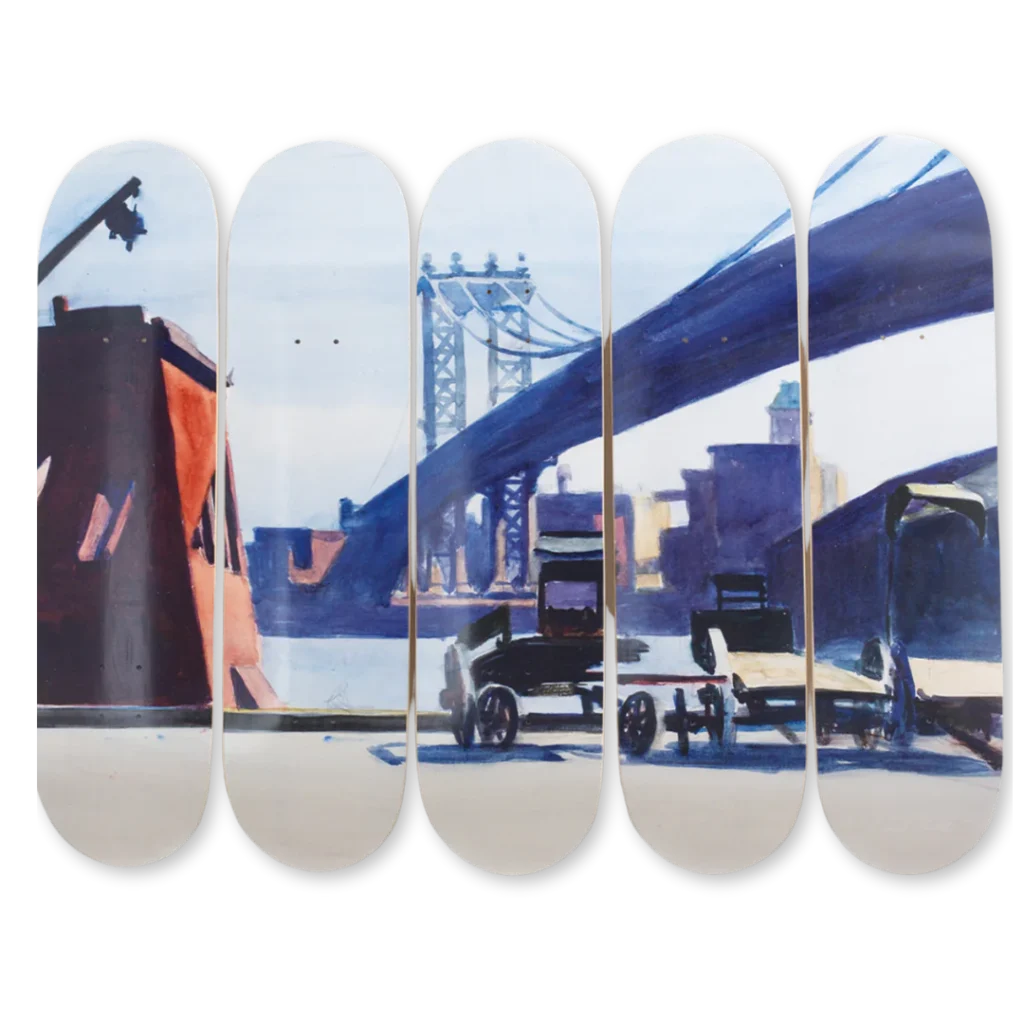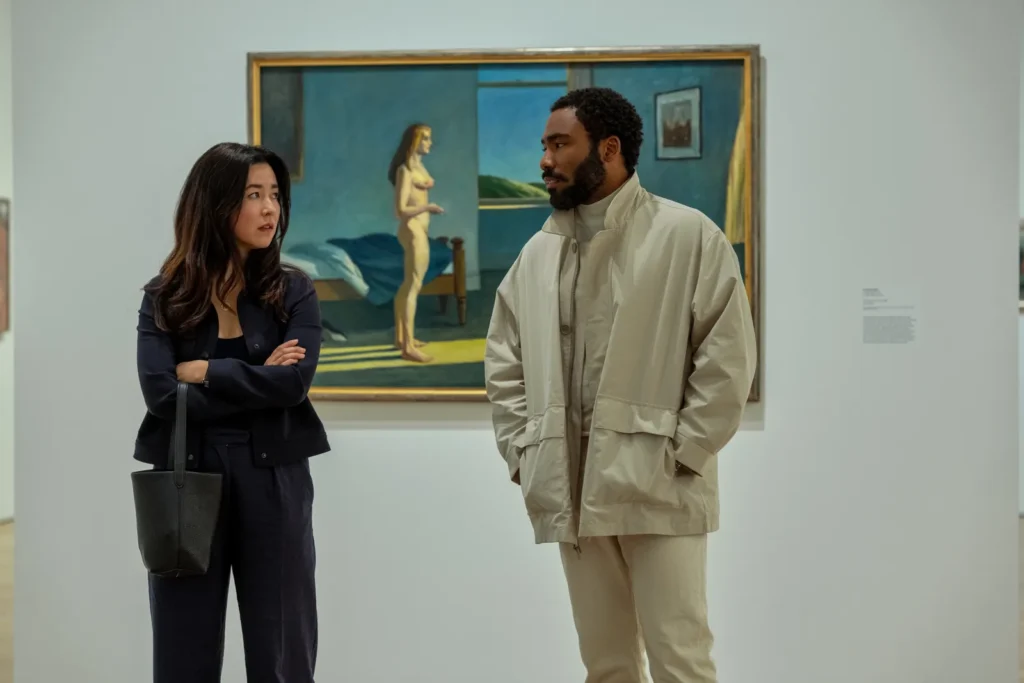News + Blog
How to Obtain an Edward Hopper License for Your Project
Request to license artwork | Join our mailing list to learn more about licensing artwork
At Artists Rights Society (ARS), we’re thrilled to represent the copyrights of over 120,000 artists from around the world, including Edward Hopper.
We’re here to help you secure an Edward Hopper license for your project. Curious to learn more or thinking about a licensed collaboration? Feel free to reach out—we’d love to chat and help bring your creative vision to life!

Morning Sun, 1952 © 2024 Heirs of Josephine N. Hopper / Licensed by Artists Rights Society (ARS), NY
Edward Hopper: A Pioneer of American Realism
Born on July 22, 1882, in Nyack, New York, Edward Hopper is notably one of the most influential American realist painters of the 20th century. His work, characterized by meticulous attention to detail and evocative use of light and shadow, offers a poignant exploration of modern American life. Hopper’s paintings are renowned for their ability to capture the solitude and quiet moments of everyday existence, providing viewers with a contemplative lens through which to observe the world.
Edward Hopper’s artistic journey began early, influenced by his supportive family. His parents, particularly his mother, encouraged his artistic pursuits. Hopper’s early education in art was complemented by his studies at the New York School of Art, where he was taught by prominent artists such as William Merritt Chase and Robert Henri. These mentors played a crucial role in shaping Hopper’s artistic vision, emphasizing the importance of capturing the reality of the world around him.
During his trips to Europe between 1906 and 1910, Hopper’s artistic development was significantly influenced by the works of European masters, particularly the Impressionists and Post-Impressionists. The exposure to these artists is evident in Hopper’s use of light and his exploration of urban landscapes. Despite these influences, Hopper’s work retained a distinctly American style, focusing on themes and scenes that resonated with the American experience.
A Unique Vision of Modern Life

“Cape Cod Morning” is a quintessential example of Edward Hopper’s distinctive style, marked by dramatic lighting, clean lines, and an atmosphere of tranquility. In this evocative painting, a woman sits in a sunlit room, surrounded by the serene coastal landscape of Cape Cod. The warm, natural light streaming through the window emphasizes the peaceful solitude of the scene, evoking a sense of introspection and calm. Like many of Hopper’s works, “Cape Cod Morning” encourages viewers to reflect on the emotions and stories of its subjects, capturing a fleeting moment in time that resonates with the essence of quiet contemplation.
Cape Cod Morning, 1928 © 2024 Heirs of Josephine N. Hopper / Licensed by Artists Rights Society (ARS), NY
Another hallmark of Hopper’s work is his depiction of architecture and interiors. Paintings such as House by the Railroad (1925), reportedly the inspiration for Alfred Hitchcock’s masterpiece Psycho, showcase his ability to imbue inanimate structures with a sense of mood and story. His meticulous attention to architectural details and the interplay of light and shadow creates a powerful visual impacts.
House by the Railroad, 1924 © 2024 Heirs of Josephine N. Hopper / Licensed by Artists Rights Society (ARS), NY

Preserving Hopper’s Legacy: The Role of the Whitney Museum and ARS
The Whitney Museum of American Art holds a significant collection of Edward Hopper’s works, making it a vital institution for understanding his legacy. The museum’s dedication to American art aligns perfectly with Hopper’s contributions to the genre. Over the years, the Whitney has organized numerous exhibitions featuring Hopper’s work, offering comprehensive insights into his artistic evolution and thematic preoccupations.
After Hopper’s death in 1967, Josephine Nivison Hopper, his wife and muse, played a critical role in preserving his legacy. An artist herself, Josephine ensured that Hopper’s works were maintained and appreciated. The intellectual property of Edward Hopper’s artworks are now managed by the Artists Rights Society (ARS), which oversees the licensing of Hopper’s works to ensure they are properly credited and protected
Edward Hopper Collaborations Licensed by ARS
The licensing of Edward Hopper’s works by ARS has enabled his art to reach new audiences through a variety of contemporary projects. ARS ensures that Hopper’s legacy is respected while facilitating collaborations that introduce his work to broader cultural contexts. The below examples highlight how ARS has facilitated the intersection of Hopper’s art with storytelling, allowing his work to continue shaping visual culture long after his time.
Edward Hopper x The Skateroom: In collaboration with ARS, the Skateroom produced limited-edition skateboards featuring three iconic Hopper works to celebrate the exhibition “Edwar Hopper’s New York” at the Whitney Museum of American Art.
Manhattan Bridge Loop, 1928 © 2024 Heirs of Josephine N. Hopper / Licensed by Artists Rights Society (ARS), NY


Edward Hopper x Mr. and Mrs. Smith: In the Amazon Prime series “Mr. and Mrs. Smith,” Maya Erskine and Donald Glover play undercover agents in an arranged marriage, and in the season finale, Edward Hopper’s “A Woman in the Sun” is featured in a pivotal poignant moment, licensed by ARS.
A Woman In the Sun, 1961 © 2024 Heirs of Josephine N. Hopper / Licensed by Artists Rights Society (ARS), NY
Edward Hopper x An Ordinary Life: Edward Hopper’s work “Early Sunday Morning,” 1930 graced the cover of “An Ordinary Life” by the acclaimed poet B.H. Fairchild, complementing the collection’s exploration of themes of small-town American life
Early Sunday Morning, 1930 © 2024 Heirs of Josephine N. Hopper / Licensed by Artists Rights Society (ARS), NY

How Do I Obtain an Edward Hopper License?
ARS helps ensure that all reproductions of Edward Hopper works adhere to high standards and receive proper authorization. When submitting a licensing request, several steps must be followed, which may differ slightly based on the project type. These steps include:
- Gather the details of your request, such as the title and year of the Hopper work(s) you wish to license.
- Consider where you will obtain a high-resolution image file. ARS does not provide images but only the copyright clearances for Hopper’s work. You will need to obtain a license for an image as well. We recommend the image bank company Art Resource.
- Create a project layout, showing how the work will appear within a book, social media post, advertisement, or product.
- If your use involves video, film, or TV, include details on the screen time of the image and whether it is ‘referenced’ by actors or ‘not referenced.’
- Note that image manipulation and cropping are generally discouraged.
- Remember to feature the appropriate credit line in your project.
The process for obtaining permissions can take time, and ARS may request additional information. Whether you’re planning an exhibition, commercial endeavor, or creative collaboration, licensing Edward Hopper’s work requires attention to artistic integrity and legal considerations. Partnering with Artists Rights Society is essential to secure the appropriate license for Hopper’s renowned art, ensuring compliance with copyright law and upholding Hoppers artistic vision.
Our licensing executives are ready to assist you throughout this process. Submit a request here here to kickstart your project and secure an Edward Hopper license with Artists Rights Society!
Request to license artwork | Join our mailing list to learn more about licensing artwork



